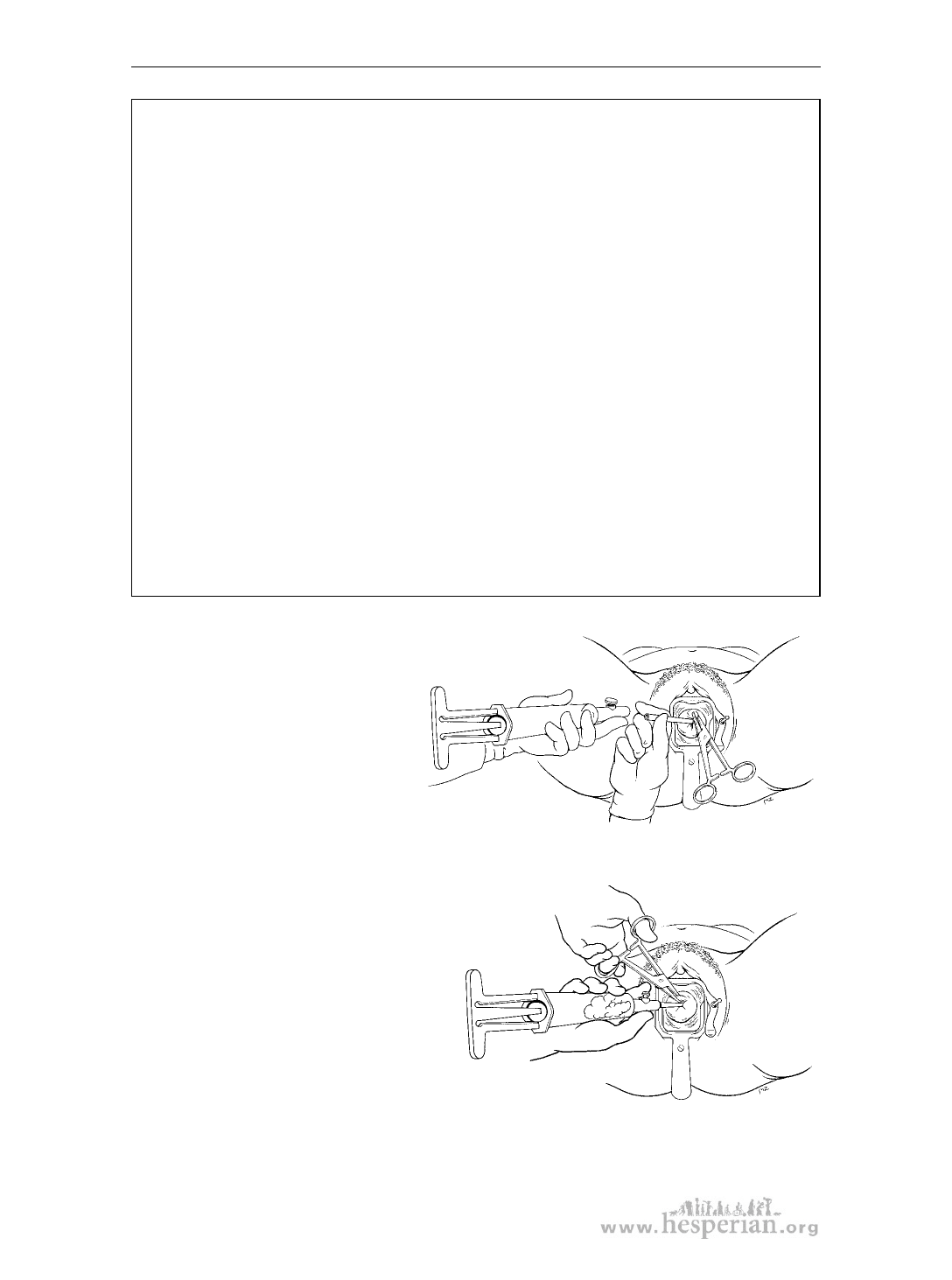
Chapter 23: Manual vacuum aspiration (MVA)
The vagus nerve
Sometimes when a cannula is put into a woman’s womb, she feels
lightheaded, dizzy, or nauseated. She may faint. This is usually because
pressure was put on her vagus nerve.
The vagus nerve starts in the back of the brain inside the head and
travels all the way down the back and then down each leg. This nerve passes
close behind the womb, and when something like a cannula is put into the
womb it may press on this nerve.
Signs of a vagal reaction:
• The woman may become sweaty, cold, or pale.
• Her pulse gets faster, and her blood pressure lowers.
• She feels faint, dizzy, or nauseated.
This feels uncomfortable for the woman, but it is not dangerous.
Stop the MVA. Remove the cannula, tenaculum, and speculum. Help her
move off of her back and onto her side, keep her warm and calm, and wait
until the feeling passes. When she feels better, you can start the MVA again.
14. Hold the syringe with one
hand and the cannula with
the other. Attach the syringe
to the cannula by pulling
the cannula slightly back
onto the syringe. Make sure
you do not push the
cannula forward into the
womb. Pushing too far
will injure the womb.
15. Pinch the button on the
syringe toward yourself to
open the valve. The button
will make a clicking sound.
Foamy and bubbly fluid and
some blood and tissue from
the pregnancy will flow from
the womb into the syringe.
Some blood may also come
out into the vagina.
426
A Book for Midwives (2010)